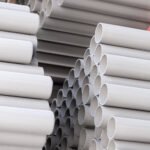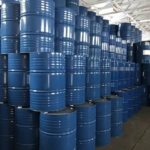Shipping chemicals safely, efficiently, and in compliance with international regulations is a top priority for businesses in the chemical industry. Different chemicals have different transportation needs — from temperature control to special containment. Choosing the right container ensures product integrity, regulatory compliance, and cost-effectiveness.
Here’s a detailed guide to the top 10 shipping container types, specifically for chemical products like Polyurethane, Polyols, PVC Resins, Silicone Surfactants, and more, with practical examples.
1. Dry Container (Standard Container)
What it is:
A basic, enclosed steel container used to ship dry, non-perishable, and non-temperature-sensitive materials.
Use in the chemical industry:
Ideal for packaging PVC Resin, colorants, and other bagged or palletized solid chemicals. If your product is packed in drums, cartons, or bags and does not require temperature control, this is the go-to option.
Example:
Shipping 25kg FFS bags of PVC resin or flame retardant powder.

2. Reefer Container (Refrigerated Container)
What it is:
A temperature-controlled container that maintains a consistent environment throughout the journey.
Use in the chemical industry:
Perfect for temperature-sensitive chemicals like certain prepolymers, specialty Polyols, or additives that degrade if exposed to heat or cold.
Example:
Transporting a temperature-sensitive Polyether Polyol used in medical-grade foam applications.

3. Open Top Container
What it is:
A container without a fixed roof, allowing cargo to be loaded from the top using a crane.
Use in the chemical industry:
Ideal for shipping large chemical reactors, molding machines, or heavy production equipment used in polyurethane foam manufacturing.
Example:
Exporting industrial foam mixing machines or reactors that cannot fit through standard container doors.

4. Flat Rack Container
What it is:
A container with a reinforced floor, open sides, and collapsible ends.
Use in the chemical industry:
Best suited for oversized tanks, blending systems, or large batches of chemical drums that don’t fit traditional containers.
Example:
Shipping a custom-built bulk storage tank for a polyurethane plant.

5. Tank Container
What it is:
A cylindrical tank built within a steel frame, specifically designed for transporting bulk liquids and gases.
Use in the chemical industry:
Essential for transporting bulk Polyols, TDI 80/20, MDI, and Stannous Octoate, as well as flammable or hazardous liquids.
Example:
Exporting 25,000 liters of MDI in a fully sealed ISO tank for use in rigid polyurethane foam production.

6. Ventilated Container
What it is:
A container that includes ventilation openings to allow for airflow.
Use in the chemical industry:
Used for materials that release gases or need air circulation to avoid condensation — useful for certain organic catalysts or packaged chemicals that must remain dry and ventilated.
Example:
Shipping catalyst bags in a humid region to prevent mold or moisture absorption.

7. Insulated Container
What it is:
A container with thermal insulation that helps maintain a stable internal temperature (without active refrigeration).
Use in the chemical industry:
Ideal for chemicals sensitive to extreme temperatures but don’t need active cooling — like foam hardeners or non-reactive polyols.
Example:
Transporting semi-sensitive polyols during winter or summer to protect them from freezing or overheating.

8. Double Door Container (Tunnel Container)
What it is:
A container with doors on both ends for faster, more efficient loading/unloading.
Use in the chemical industry:
Ideal for quick turnaround operations or long packaging like pipes, hoses, or insulation panels used in chemical facilities.
Example:
Shipping foam insulation panels treated with flame retardants to a construction project site.

9. Bulk Container
What it is:
A container specially designed to transport unpackaged bulk solids or powders.
Use in the chemical industry:
Used for bulk transport of powder chemicals such as PVC resins, colorants, or blowing agents.
Example:
Loading 20+ tons of PVC resin directly into a bulk container using gravity feed.

10. Half-Height Container
What it is:
A container with half the height of a standard one, optimized for heavy and dense cargo.
Use in the chemical industry:
Useful for transporting heavy chemical drums, blocks of solid additives, or metal parts for foam production units.
Example:
Shipping stacked metal drums of flame retardant to reduce tipping risks and optimize space.

Why Container Choice Matters in the Chemical Industry
- Product Safety: Prevents degradation, contamination, or spills.
- Compliance: Meets international shipping regulations for hazardous and sensitive materials.
- Efficiency: Reduces handling time and improves logistics planning.
- Cost Optimization: Prevents damage claims and product loss.
Conclusion
In the chemical industry, logistics is more than just moving cargo — it’s about delivering sensitive products safely, efficiently, and compliantly. Choosing the right container helps safeguard your materials, ensure smooth customs clearance, and protect your brand reputation.
At Emirachem, we understand every detail of chemical logistics. From supplying high-performance Polyurethane, Polyols, and PVC Resins, to ensuring a smooth, container-specific shipment process, we’re here to help you ship with confidence.
👉 Contact Emirachem today for expert guidance on shipping your chemical products the right way.









